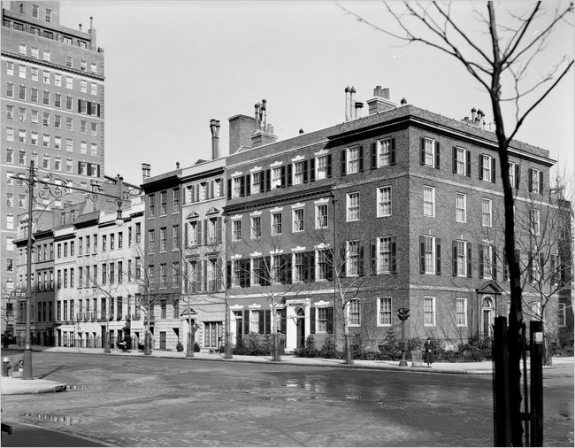One sign of a powerful style is its invisibility. It is so familiar it is scarcely noticed. It is so natural, how could things be otherwise? We don’t really pay attention to the style itself. Instead we notice contrasts, variations, violations.
One of the achievements of the illuminating exhibition “The American Style,” which opens on Tuesday at the Museum of the City of New York, is that it helps make the invisible visible. With photographs of grand mansions and suburban residences; with images of high schools, apartment buildings, town halls and post offices; with examples of mass-market furniture and finely made cabinetry; with pewter candlesticks and pictorial wall murals and floor plans, the exhibition gradually helps us see what is all around us. Its subtitle defines the terrain: “Colonial Revival and the Modern Metropolis.”
Colonial Revival, we come to recognize, is latent in much of our architecture, furniture and urban design. And the show’s creators — Donald Albrecht, a curator at the museum, and Thomas Mellins, who has recently mounted the New York Public Library’s centennial exhibition — argue that this style, while strongly associated with the six decades that framed the beginning of the 20th century, is still so influential that it has become (even when rejected) “the quintessential American style.”
Architects and designers, professionally attentive to such matters, will not be surprised by that assertion or by the arguments the curators make. But many of us, only intermittently attentive, will discover, like Molière’s bourgeois gentleman, that we have been speaking “prose” all our lives — prose written in the language of this style.
But what is Colonial Revival? What effect does it have? Why has it been so powerful? When we enter the gallery, the first object we see is a mahogany-colored door within its frame, recently created by Peter Pennoyer Architects for a house in Nantucket, Mass. It is handsome, grand and, in certain respects, thoroughly familiar. But seeing it out of context, we become aware of its distinctive detail: symmetrical rectangular panels with a centered knocker; crisp, geometric framing with columns flattened into pilasters; a semi-oval fan window above, its decorative curves gently softening the door’s commanding rectitude.
The door is almost an abstraction of the style, drawing on some elements, stripping away others, emphasizing a commanding, classical authority. Its allusions are to the architecture of Colonial America, which was itself a kind of reduced version of Georgian English style.
There should be more analytical detail about Colonial Revival here, as in the generally helpful companion book; it would help to be patiently shown the character of that grammar, tracing its allusions and its transformations. But we begin to piece elements together ourselves in the examples on display, seeing the relatively flat facades, rectangular foundations, columned porches, paneled wood doors, shingled roofs, red brick.
We see, too, how these various elements can be used to create buildings that are both imposing and comforting, grand and quaint. A 1939 Howard Johnson’s in Queens seems to put the word colonial in quotation marks. And we look at a 1915 monograph showing the work of McKim, Mead & White, whose principals toured New England in the 1880s, learning from its colonial buildings, before becoming influential shapers of the Colonial Revival at the end of the 19th century.
Photographs of George Washington High School on Audubon Avenue in Washington Heights, built in 1925, and Benjamin Franklin High School on the Franklin D. Roosevelt Drive in Manhattan, built in 1941, show buildings that invoke the colonial past not just with their names but also with porticos resembling pillared Greek temples, topped by cupolas meant to echo small-town churches and city halls.
They also reveal a double aspect of the style, which is one of the things that has made it so flexible. In one respect it elevates a building, invoking the classical past that the founding fathers had also looked to for inspiration; the place is meant to be imposing, worthy of allegiance and devotion. In another respect, it humbles that same building: It is not meant to overwhelm but to welcome. It turns the grand into something comfortable. The cupola and slate roofs; the swinging window shutters; the simple, whitewashed woodwork: here is the democratic side of pillared grandeur.



